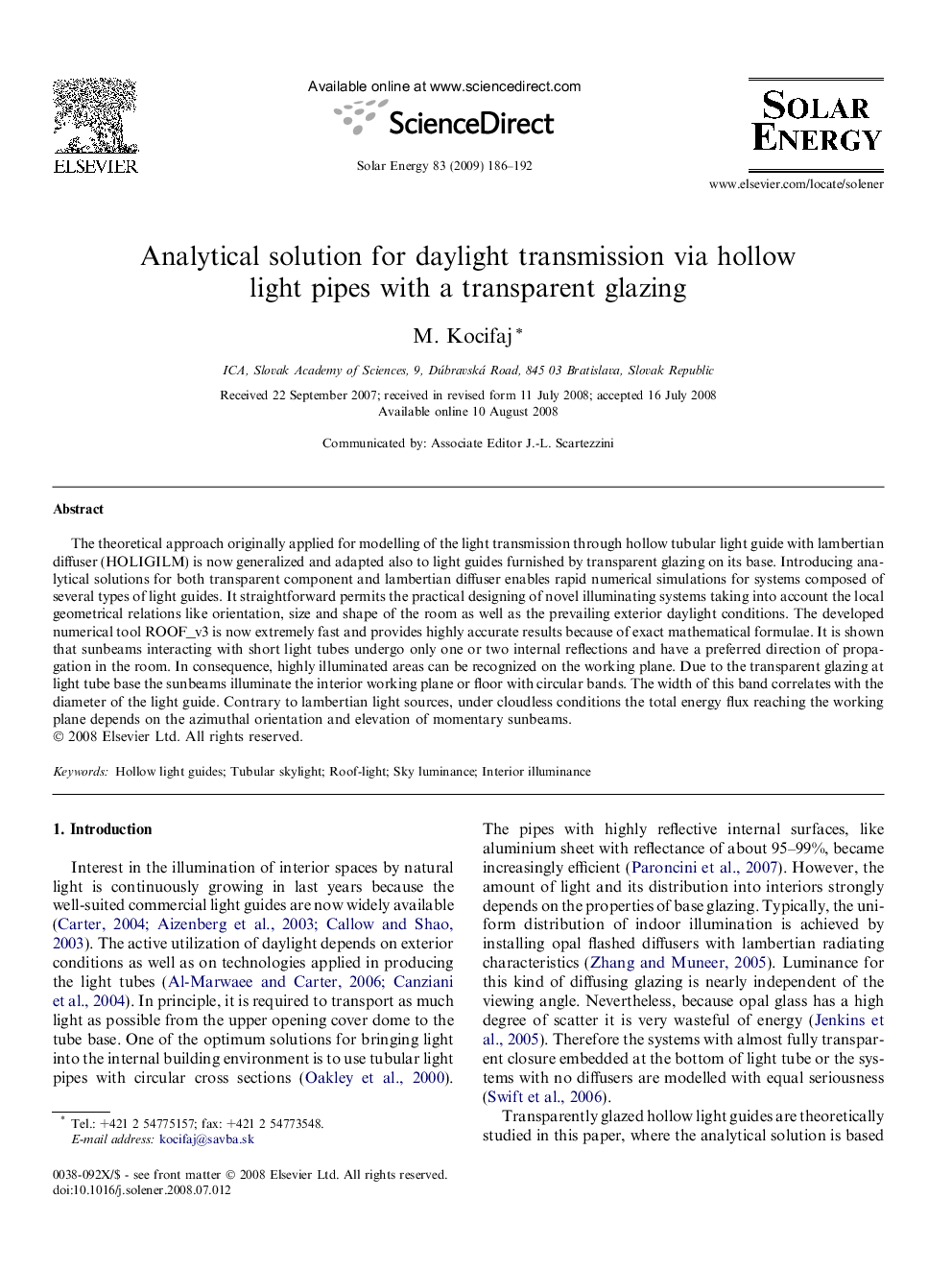| Article ID | Journal | Published Year | Pages | File Type |
|---|---|---|---|---|
| 1551679 | Solar Energy | 2009 | 7 Pages |
The theoretical approach originally applied for modelling of the light transmission through hollow tubular light guide with lambertian diffuser (HOLIGILM) is now generalized and adapted also to light guides furnished by transparent glazing on its base. Introducing analytical solutions for both transparent component and lambertian diffuser enables rapid numerical simulations for systems composed of several types of light guides. It straightforward permits the practical designing of novel illuminating systems taking into account the local geometrical relations like orientation, size and shape of the room as well as the prevailing exterior daylight conditions. The developed numerical tool ROOF_v3 is now extremely fast and provides highly accurate results because of exact mathematical formulae. It is shown that sunbeams interacting with short light tubes undergo only one or two internal reflections and have a preferred direction of propagation in the room. In consequence, highly illuminated areas can be recognized on the working plane. Due to the transparent glazing at light tube base the sunbeams illuminate the interior working plane or floor with circular bands. The width of this band correlates with the diameter of the light guide. Contrary to lambertian light sources, under cloudless conditions the total energy flux reaching the working plane depends on the azimuthal orientation and elevation of momentary sunbeams.
